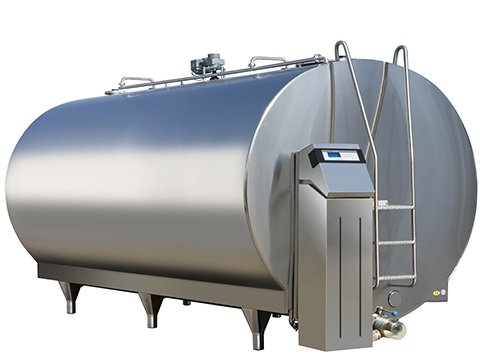
Milk Cooling Tanks are industrial equipment used to rapidly cool raw milk after harvesting to prevent microbiological spoilage. They are primarily used in dairies, milk collection centers, and farms to cool and store milk at temperatures as low as 4°C. This helps preserve milk quality and extend its shelf life.
Cooling System: Uses a compressor-based (screw or piston type) refrigeration cycle consisting of an evaporator and condenser. Refrigerants such as R404A or R134a are commonly used.
Storage Capacity: Available in models ranging from 500 liters to 50,000 liters.
Temperature Control: An automatic thermostat maintains milk temperature within the range of 2°C to 4°C.
Insulation: High-efficiency thermal insulation is provided by polyurethane foam.
Agitator (Mixer): Low-speed agitators ensure homogeneous cooling of the milk.
Material: The inner tank is made of AISI 304 or 316-grade stainless steel.
Milk Intake: Freshly harvested milk (approximately 35°C) is loaded into the tank.
Rapid Cooling: The compressor activates, initiating the cooling process via the evaporator.
Temperature Control: Sensors continuously monitor milk temperature, and the thermostat regulates the compressor.
Storage: Once the target temperature is reached, cooling stops, and the milk is safely stored.
Plate Heat Exchanger: Some models feature pre-cooling with a plate heat exchanger for energy efficiency.
Ice Bank (Phase Change) Systems: Ice is produced during off-peak electricity hours to reduce daytime cooling costs.
Hygienic Design: CIP (Clean-in-Place) systems allow for easy sterilization.


